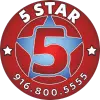
For many people, the appeal of being a plumbing DIY homeowner is saving money or having something to show for their efforts. But while small projects like painting or shelf-hanging are usually simple enough, plumbing for dummies is a more significant challenge.
While fixing a leaky faucet or unclogging a toilet may seem like simple plumbing basics, there is much more to it than meets the eye. Of course, we always recommend hiring professional assistance for complex projects. Still, for those who are determined to continue reading, we will discuss all the fundamentals of plumbing for beginners that everyone should learn before attempting any significant repairs. This way, you can avoid causing more harm than good.
So how to do plumbing? The basics of plumbing involve three main parts: supply, drainage, and waste. The supply brings fresh water into the home, the drainage gets rid of wastewater, and the waste is used water from around the house that is sent to the sewer.
Your home’s water pipes are usually supplied by one of two sources:
Let’s explore the pros and cons of each option.
City water
People who live in areas near cities or suburbs have city water systems. Big pipes, called mains, are buried under the streets and distribute water to neighborhood buildings located in the system.
The water meter is located in front of your home’s plumbing system and measures the water used in your household to send a bill to you from the local utility company. Also, a shut-off valve near the water meter can be turned off to prevent water flow into your home, which comes in handy during emergencies like when pipes break.
Water meters are typically located near the street, and they’re easy to spot because they have a metal cover that’s about the size of a large plate. First, the body will be labeled “water meter.” Once you find it, open up the cover and note where the shut-off valve is located. Then, you can turn the on and off the valve using a large adjustable wrench.
Although some people swear by well water, some benefits come with city water.
Well water
If you own property with enough space, you can drill a well. There are some benefits to using wells as a water source.
While wells are a great source of water, they are sometimes flawed. For example, if there is increased activity near your well, it could lead to groundwater contamination. To ensure that your water is safe to drink, have it tested yearly and pay attention to any changes in taste.
Once water enters your home, several crucial factors help send it where you need it.
Stop valves
When you have a minor repair, like a leaky faucet, it’s impractical to shut off all the water coming into your home. That’s where stop valves come in handy.
Several stop valves are located throughout your home, including near your water source and under each sink and toilet. By shutting these valves off, you can specify which areas of the house you intend to repair or perform replacement work in. Turning the valve by the water source may be necessary if you’re planning an extended vacation or worry about freezing pipes during cold weather.
Hot and cold water
Hot water gets to our homes through a heater, while cold water comes straight from the tap or toilet tanks. Most homes have one centralized heater for hot water, even though some places may utilize on-demand heaters.
Initially, your central water heater is attached to your main water pipe. Then, the hot water gets delivered to where you need it through a system of pipes. Various types of energy such as electricity, gas or solar can be used to make hot water from water heaters.
Basic plumbing knowledge is essential to ensure that wastewater is properly flowing out of your home. Your gutters rely on gravity to take the wastewater away from your home and send it to either a municipal wastewater system or a septic tank. That said, you should be aware of three vital parts of your drain system: vents, traps, and cleanouts.
Vents
The next time you see one of those small pipes jutting out of a roof, wonder no more: they’re vents for drains. In short, your drainpipes won’t function as intended without these vents. Likewise, gutters must have proper venting to allow wastewater to flow correctly through the system.
Traps
The traps in your home are curved sections of pipe located beneath your sink and built into the base of your toilet. Water stays in the trap, preventing sewer gas from backing into your dwelling. However, due to their shape, clogs can develop in these traps.
Clean-outs
Clogged traps can be easily cleaned by removing the plugs that provide access to the trap without needing to disassemble them completely. Sometimes, you can fix a clog by using the clean-out feature.
The first and foremost tool you will need is a wrench to complete any repair. That is because pipes are connected by fittings rather than soldered. Therefore, to make the necessary repairs, you will have to find a way to disconnect them — and that’s where a wrench comes in handy. There are three types of wrenches that you will need:
Having plumbing 101 issues? You’re not alone. Here are a few ways to fix some of the most common problems, from leaky pipes to running toilets.
A minor clog often causes a slow-draining sink near the trap, usually composed of hair, food, or other debris that builds up over time. Luckily, this problem is easy to fix without Drano or harsh chemicals.
To clear a minor clog, mix 1/4 cup baking soda with one cup white vinegar. Let the mixture sit for 10-15 minutes, then run hot water from the tap until it runs through. You may need to repeat this process, but if the clog persists, you can try using a drain snake.
Use your drain auger (snake) to clear out the clog in your pipe by feeding it down the pipe until you hit resistance. Next, turn the crank on the snake to move through whatever is causing a blockage. Keep cranking until everything blocking up your pipes has been cleared away. Test if your drains are working again by running hot water for a few minutes, and then place your drain or sink stopper back into its rightful place.
Have you ever had a toilet run? It may sound like the tank is not completing its filling process. This continuous running noise could be due to a broken or loose toilet flapper, fill valve, or even an overflow pipe that isn’t set. We’ve all tried the “jiggle the handle” method at some point, but unfortunately, this usually does not entirely fix the problem. If your toilets are giving you grief, use these steps as a plumbing guide to troubleshoot and solve your issue.
If the water continues running after you flush, there might be a problem with the flapper. First, check if it’s open when water flows through. If not, adjust or replace it. Lastly, check the overflow pipe’s height to ensure it’s in the correct position.
Never underestimate the power of a water leak. Left unattended, it can damage your plumbing system beyond repair and cause mold and mildew. Follow these steps to know how to spot a water leak early on and save yourself time, money, and energy in the future.
If you hear a gurgling noise emanating from an unfamiliar place, see water pooling where it never has, or notice stains on the ceiling, this could be due to a roof leak. Another possibility is if you find puddles around your basement — this might mean a leak in an underground pipe. Finally, low water pressure, high water bills, and lukewarm showers are potential signs of leaks.
Before continuing, you should understand a few basic plumbing tips for the beginner to help avoid future damage to your home’s plumbing system.
Now that you understand the basics of plumbing, we hope you can take better care of your plumbing and identify problems early. However, if you ever feel stuck or like the job is too complicated, give us a call at 5-star Plumbing for a free estimate! No matter how big or small the task may be, our team of professional plumbers will be able to provide you with leak detection and repair services.
The most common plumbing problem is a water leak. A water leak can occur in various places, including the faucet, showerhead, water heater, and pipes. If you suspect a water leak in your home, it is best to call a professional plumber to help identify the source and repair the leak.
There are three plumbing systems: underground, municipal, and private. Each method has its benefits and drawbacks.
THeavy rain can cause problems for your plumbing if it’s not properly prepared, such as backups and cracks in your system. If you live in an area with heavy rainfall, it’s best to consult a professional plumber to make sure your system is prepared.
If you live in a colder climate, it is essential to winterize your house’s plumbing system to prevent any damage from occurring. One way to do this is by shutting off the water supply to your home. To do this, locate the main water shutoff valve and turn it off. Another way to winterize your plumbing is by draining the system. That can be done by opening the faucets in your home and letting the water run until it slows down or stops. Once the taps have been opened, you can open the drain valves (usually located at the bottom of the sink or tub) to let the water flow.
Mike Joshua, a 33-year-old plumber based in California. With a passion for solving complex problems and a commitment to his trade, Mike has dedicated the past 8 years of his life to honing his skills as a professional plumber. After completing technical college Mike quickly secured a job in a plumbing company and has been working steadily ever since. Mike's experience includes not only households but industrial gas and plumbing systems and installation, repair the equipment for different types of business He is known for his attention to detail, strong work ethic, and ability to complete projects on time and within budget. He is always striving to improve his skills and stay up-to-date with the latest industry developments and advancements. In conclusion, Mike enjoys outdoor activities such as hiking and camping. He also has a passion for DIY projects around the home and is always looking for new challenges to tackle.


As a first-time homeowner, I found this article to be an invaluable introduction to residential plumbing. The diagrams of basic pipe configurations and water flow patterns finally helped me understand what’s behind my walls. The section on common emergencies and where to locate shut-off valves was particularly useful – I immediately went and labeled all of mine! While the terminology guide is comprehensive, I wish they’d included more troubleshooting examples for typical issues. Still, this guide gave me the confidence to handle minor repairs and know when to call a professional.